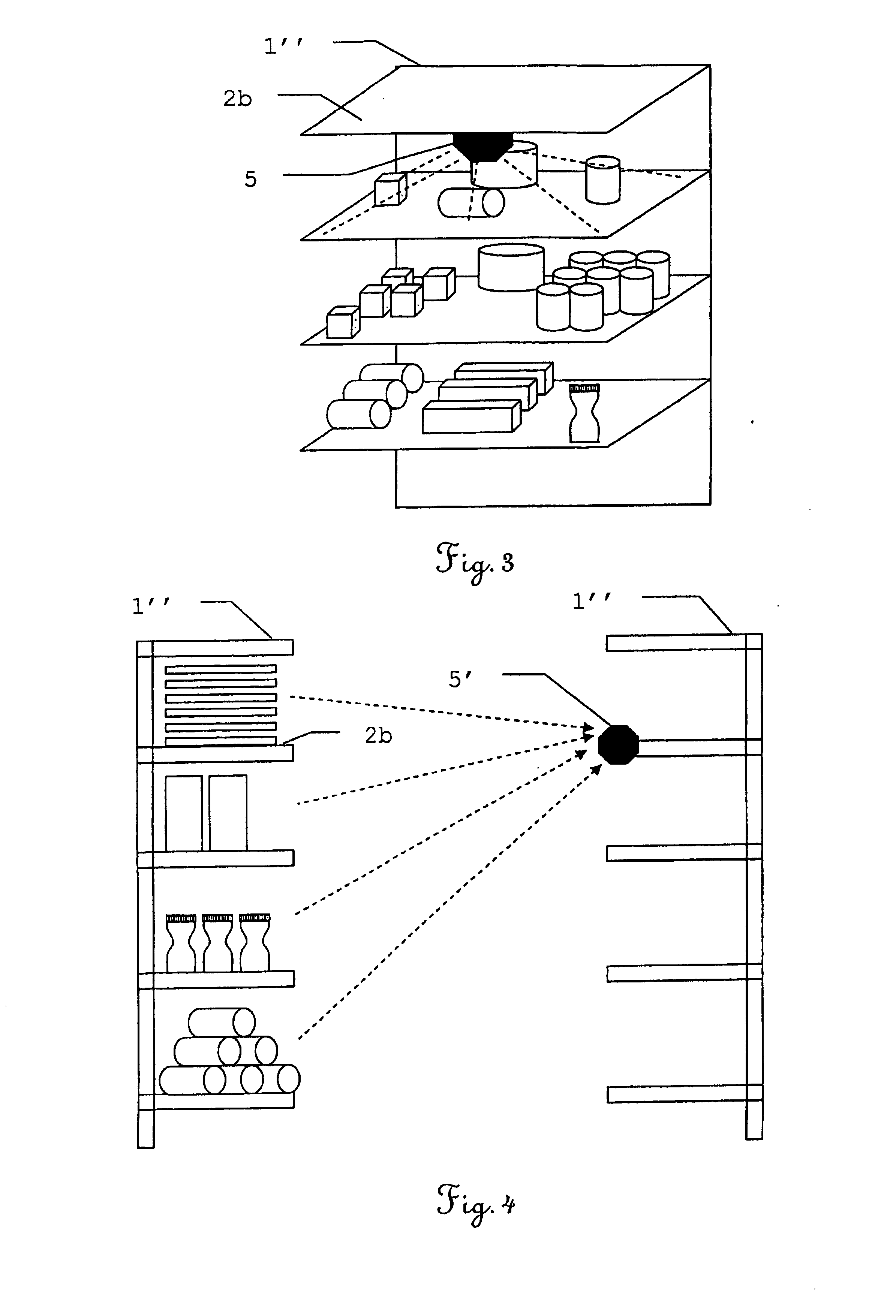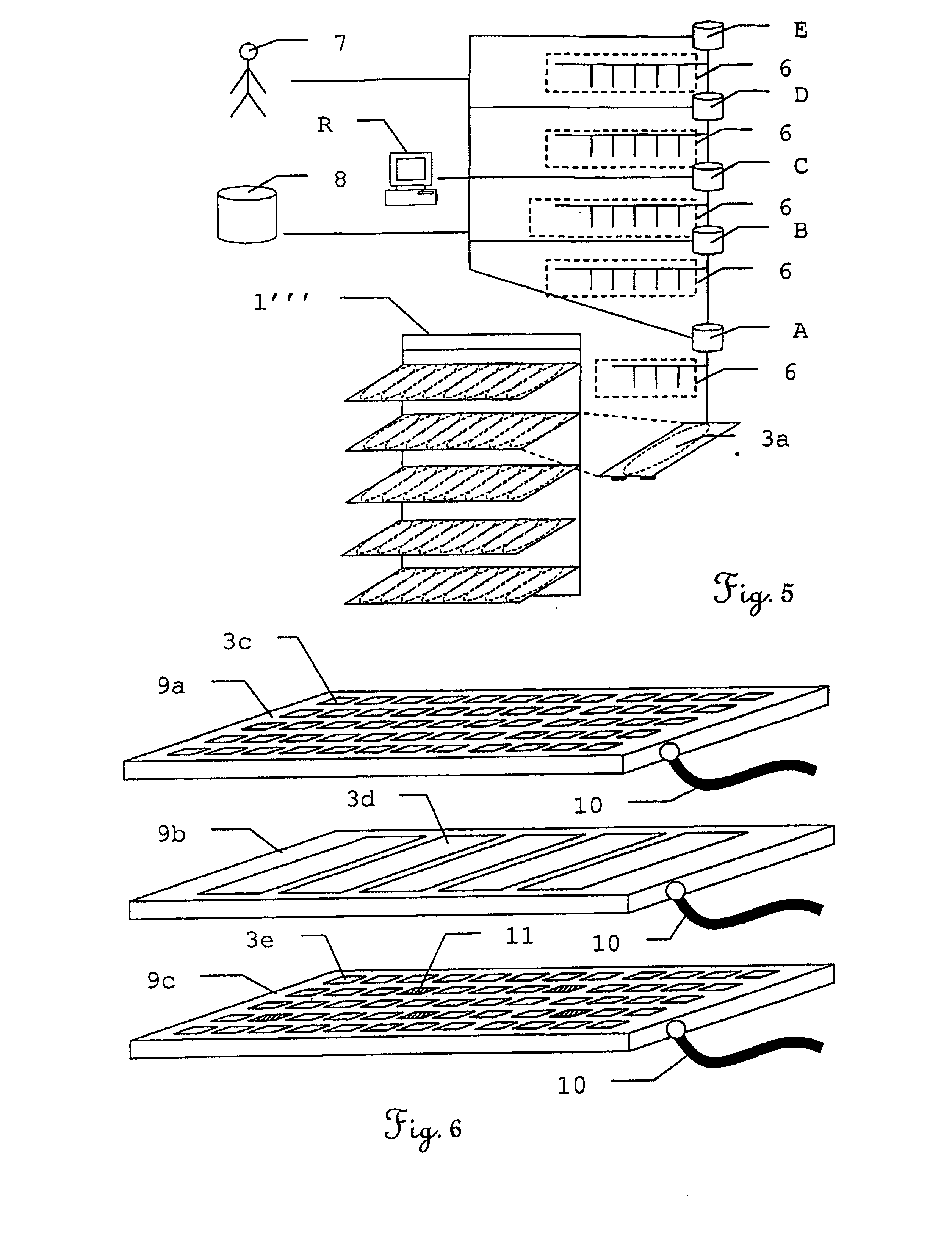Stocking system and method for managing stocking
a stocking system and stocking technology, applied in the field of stocking systems, can solve problems such as lack of availability or “out of stock” issue, customer frustration, lack of availability
- Summary
- Abstract
- Description
- Claims
- Application Information
AI Technical Summary
Benefits of technology
Problems solved by technology
Method used
Image
Examples
first embodiment
[0072]FIG. 3 shows the schematic representation of the support 2b of a stocking shelf 1″ with an optical sensor element 5, wherein further sensor elements such as, e.g., the gravimetric sensor element are not shown for reasons of clarity. The optical sensor element 5 is mounted above a support 2b on the underside of a support 2b located above it. An identification and, if necessary, a detection of quantity, too, can take place by the optical detection of the goods stocked under it. If there is only a sparse occupancy of the support 2b, e.g. with jewelry or watches, the supports can be designed to be transparent so that, under favorable circumstances, a detection may be carried out on several supports 2b with a single optical sensor element 5. In other cases, a single optical sensor element 5 must be used for each support 2b, if necessary. The information detected by the optical sensor element 5 can now be combined with the results of further sensors or sensor arrangements. In partic...
second embodiment
[0073]FIG. 4 shows the arrangement of two stocking shelves 1″ with supports 2b and an optical sensor element 5′. The optical sensor element 5′ is mounted on a support 2b, which is placed in an optically advantageous manner, or on the stocking shelf 1″ opposite the stocking shelf 1″ on which a detection is to be carried out. Due to this mounting, a detection on a large range of supports 2b for goods to be stocked can be carried out with only a single optical sensor element 5′.
[0074]FIG. 5 shows the schematic representation of the informatorial system architecture of the stocking system according to this invention. The sensors 3a that are arranged line-like or matrix-like in a stocking shelf 1′″ are connected to the total system in the form of a sensor network via communication lines. Here, individual groups of stocking shelves or other storage units respectively form, logically and / or physically, hierarchical grades to which commodity groups, locations or legal or administrative affi...
PUM
 Login to View More
Login to View More Abstract
Description
Claims
Application Information
 Login to View More
Login to View More - R&D
- Intellectual Property
- Life Sciences
- Materials
- Tech Scout
- Unparalleled Data Quality
- Higher Quality Content
- 60% Fewer Hallucinations
Browse by: Latest US Patents, China's latest patents, Technical Efficacy Thesaurus, Application Domain, Technology Topic, Popular Technical Reports.
© 2025 PatSnap. All rights reserved.Legal|Privacy policy|Modern Slavery Act Transparency Statement|Sitemap|About US| Contact US: help@patsnap.com



